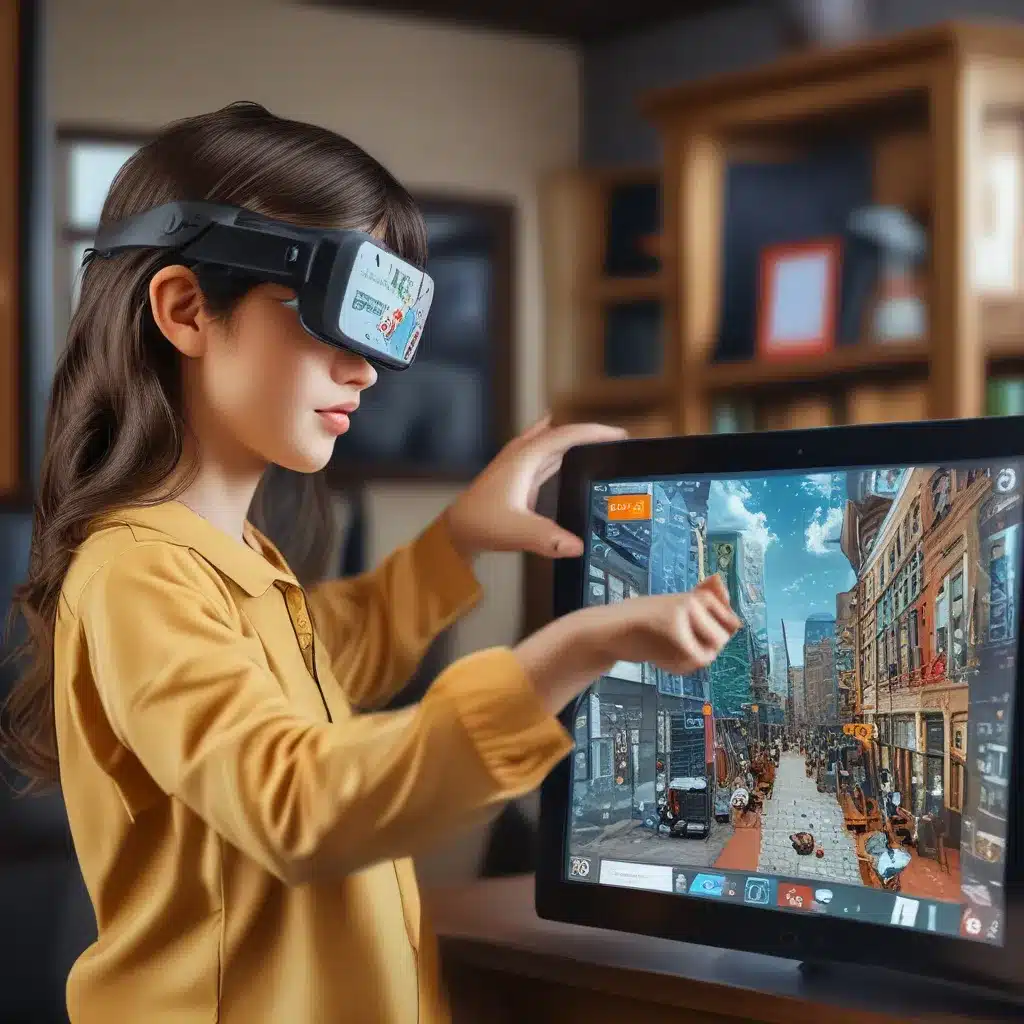
The Future of Learning is in Our Hands (and Headsets)
Picture this: You’re a student in a history class, about to embark on a virtual field trip to the ancient ruins of Pompeii. With a tap of your AR-enabled smartphone, you’re instantly transported to the bustling streets of the Roman city, surrounded by towering monuments and the hum of everyday life. As you explore, digital overlays provide detailed information about the architecture, customs, and tragic fate that befell this once-thriving civilization.
Sound like science fiction? Not anymore. Augmented reality (AR) and virtual reality (VR) are poised to transform the education landscape, ushering in a new era of immersive, personalized learning experiences. And at the heart of this technological revolution lies the power of Generative AI – an intelligent system that can adapt course content and teaching methodologies to the unique needs of each student.
Generative AI: Your Personal Learning Concierge
Imagine having a digital tutor that can read your every move, understand your learning style, and tailor the lesson plan accordingly. That’s the promise of Generative AI in education. By harnessing advanced neural networks, this cutting-edge technology can create dynamic, customized content that caters to individual students’ preferences and pace of learning.
Gone are the days of one-size-fits-all textbooks and lectures. With Generative AI, a math lesson might start with a set of practice problems tailored to your current skill level. If you struggle, the AI can instantly provide alternative explanations or generate supplementary exercises until the concept clicks. Conversely, if you breeze through the material, the system can introduce more advanced challenges to keep you engaged and stimulated.
Vizrt, a leader in real-time graphics and live production solutions, recently unveiled a game-changing product called Viz Virtual Studio Go. This platform empowers organizations to create engaging presentation experiences using AR graphics and virtual set scenes, perfect for hybrid corporate events, visual radio, and educational settings.
Immersive Learning: Stepping Into the Classroom of the Future
But Generative AI is just the beginning. When combined with the immersive power of AR and VR, the future of education becomes truly extraordinary. Imagine slipping on a VR headset and finding yourself in a virtual classroom, surrounded by classmates from around the world. Social VR experiences like this not only reduce the isolation of remote learning but also foster a sense of community and collaboration among students.
In the AR realm, educators can bring abstract concepts to life by overlaying digital information onto the physical world. A biology lesson on the human circulatory system, for example, could feature an AR-enhanced model of the heart, with pulsing veins and real-time data on blood flow. Students can then interact with this virtual anatomical display, gaining a deeper, more immersive understanding of the subject matter.
The Benefits (and Challenges) of Immersive Learning
The potential benefits of VR and AR in education are vast. These technologies can create inclusive, engaging learning environments that cater to diverse learning styles and abilities. VR simulations, for instance, can revolutionize medical training by allowing students to practice delicate procedures in a risk-free, virtual setting. And AR can make traditionally dry subjects, like history or geography, come alive with interactive, location-based experiences.
Of course, the integration of these cutting-edge tools into the education system is not without its challenges. Concerns around the social and emotional impact of excessive VR usage, as well as the technical and financial barriers to widespread implementation, will need to be addressed. But as IT Fix, a leading computer repair service in the UK, can attest, the benefits of embracing technological change often outweigh the risks.
The Future is Bright (and Immersive)
As we look to the horizon, the classroom of the future is poised to become a vibrant, immersive learning environment where Generative AI, AR, and VR converge to create a truly transformative educational experience. Students will no longer be passive recipients of information but active participants in their own learning journeys, guided by intelligent systems that anticipate their needs and unlock their full potential.
So, the next time you hear the term “virtual field trip,” don’t be surprised if it’s not just a video on a screen, but a fully-fledged, interactive adventure that transports you to another time and place. The future of education is here, and it’s a world of endless possibilities – all within the reach of a headset or a smartphone.












